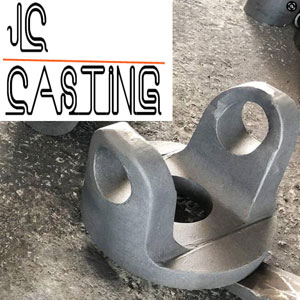
Cast steel is a general term for iron-based alloys used to produce castings. It does not undergo a eutectic transformation during solidification. Cast steel is a kind of casting alloy. It uses iron and carbon as the main elements. The carbon content is between 0-2%.
Classification
according to carbon content
Cast steel is divided into three categories. 1. cast carbon steel 2. cast low alloy steel 3. special steel.
according to varieties and uses.
Cast steel can be divided into 1. general engineering cast steel. 2. welded structure cast steel. 3. stainless steel cast steel. 4heat-resistant steel cast steel
Steel casting
Cast steel is also a very favorite material for steel casting manufacturers
Steel castings have the smallest stress concentration factor in shape and mass design. The overall structure is strong. These aspects can reflect the flexibility of steel castings.The demand for steel casting products in the market is also very large. Because of the strong plasticity of steel castings, products ranging from tens of grams to hundreds of tons can be made of steel castings. So, the application range of steel casting products is also very wide.
Advantages and disadvantages of steel castings
1. Disadvantages
(1) When casting steel parts, the structure is easy to be uneven
The molten steel is formed when the raw steel material is melted at high temperature. After the liquid molten steel is injected into the mold, it will preferentially contact the mold wall. The temperature of the molten steel that touches the mold wall will drop rapidly. So, it is easy to solidify into finer grains.
With the subsequent pouring of molten steel, the distance from the mold wall will increase. The influence of the mold wall will gradually weaken. The grains will grow into columnar crystals parallel to the mold wall in the direction perpendicular to it. In this case, in the middle part of the casting, there is no obvious directionality of heat dissipation. and grow freely in all directions until they touch each other. Thus, an equiaxed crystal region is formed. So, the internal structure of the casting is not uniform. The grains are also relatively coarse.
(2) The surface of the casting is rough
The rough surface produced by steel casting manufacturers is generally rough. It cannot be compared to the type of casting surface that is machined. And the shape is more complicated.
2. Advantages
(1) High flexibility of steel castings
The most important advantage of steel castings is high flexibility. Generally, steel casting manufacturers have great freedom of choice and design in the size and shape of the castings when designing the process. Especially for parts with particularly complex shapes or central control sections.
All steel castings can be solved by the special process of core grouping. Forming and changing the shape of steel castings is very simple. The transformation speed from design drawings to finished products is also very fast. This facilitates quick quotations from foundries. Delivery time will also be shortened.
(2) Sharp changes from light to heavy
Steel castings have a wide range of weights. Unlike other castings, too small to be made. Too big to do. Steel castings can range from investment castings of tens of grams to large steel castings of hundreds of tons.
(3) The structure of the steel casting material is very strong
The material isotropy of cast steel and the overall structure of cast steel are very strong. So, the reliability of the project is greatly improved. Coupled with the advantages of weight design and short delivery time. It has a competitive advantage in terms of price and the economy of casting products in the market.
What is the difference between forged steel and cast steel?
Although forged steel and cast steel are both a kind of steel, they are still very different. They cannot be replaced in many parts processing. What is the difference between forged steel and cast steel?
